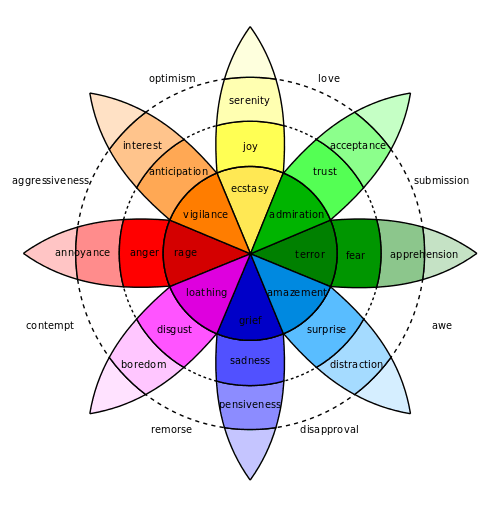Psychomotor agitation
| Psychomotor agitation | |
|---|---|
| Classification and external resources | |
| Specialty | Psychiatry, emergency medicine |
| ICD-9-CM | 308.2 |
| MeSH | D011595 |
Psychomotor agitation is a set of signs and symptoms that stem from mental tension and anxiety. The signs are unintentional and purposeless motions; the symptoms are emotional distress and restlessness. Typical manifestations include pacing around a room, wringing the hands, uncontrolled tongue movement, pulling off clothing and putting it back on, and other similar actions. In more severe cases, the motions may become harmful to the individual, such as ripping, tearing, or chewing at the skin around one's fingernails, lips, or other body parts to the point of bleeding. Psychomotor agitation is typically found in major depressive disorder or obsessive-compulsive disorder, and sometimes the manic phase in bipolar disorder, though it can also be a result of an excess intake of stimulants. It can also be caused by severe hyponatremia. The middle-aged and the elderly are more at risk to express it.
Causes
Causes include:[1]
- Bipolar disorder
- Post-traumatic stress disorder (PTSD)
- Panic attacks
- Anxiety disorder
- Alcohol withdrawal
- Claustrophobia
- Dementia
- Parkinson's disease
- Traumatic brain injury
- Alzheimer's disease[2]
Treatment
Intramuscular midazolam, lorazepam, or another benzodiazepine can be used to both sedate agitated patients, and control semi-involuntary muscle movements in cases of suspected akathisia.
Droperidol, haloperidol, or other typical antipsychotics can decrease the duration of agitation caused by acute psychosis, but should be avoided if the agitation is suspected to be akathisia, which can be potentially worsened.[3] In those with psychosis causing agitation there is a lack of support for the use of benzodiazepines, although they can prevent side effects associated with dopamine antagonists.[4]
See also
References
- ↑ Causes of Psychomotor agitation, Retrieved 11th March 2016.
- ↑ Koenig, AM; Arnold, SE; Streim, JE (January 2016). "Agitation and Irritability in Alzheimer's Disease: Evidenced-Based Treatments and the Black-Box Warning.". Current psychiatry reports. 18 (1): 3. PMID 26695173.
- ↑ Isbister GK, Calver LA, Page CB, Stokes B, Bryant JL, Downes MA (October 2010). "Randomized controlled trial of intramuscular droperidol versus midazolam for violence and acute behavioral disturbance: the DORM study". Ann Emerg Med. 56 (4): 392–401.e1. doi:10.1016/j.annemergmed.2010.05.037. PMID 20868907.
- ↑ Gillies, D; Sampson, S; Beck, A; Rathbone, J (Apr 30, 2013). "Benzodiazepines for psychosis-induced aggression or agitation.". The Cochrane database of systematic reviews. 4: CD003079. doi:10.1002/14651858.CD003079.pub3. PMID 23633309.
